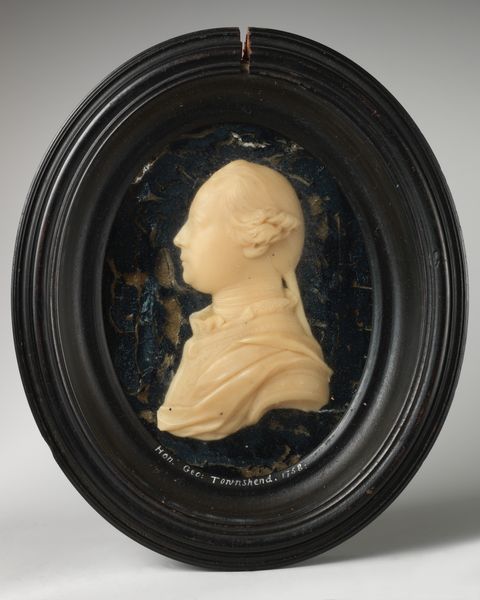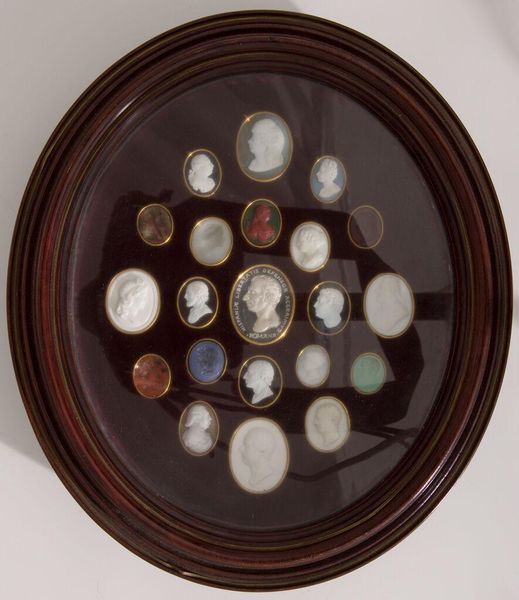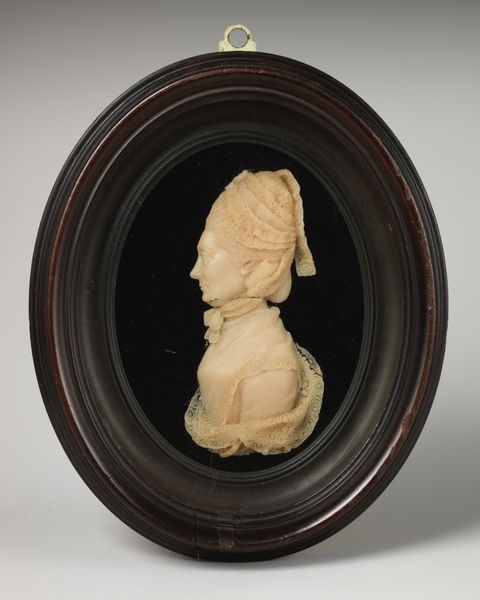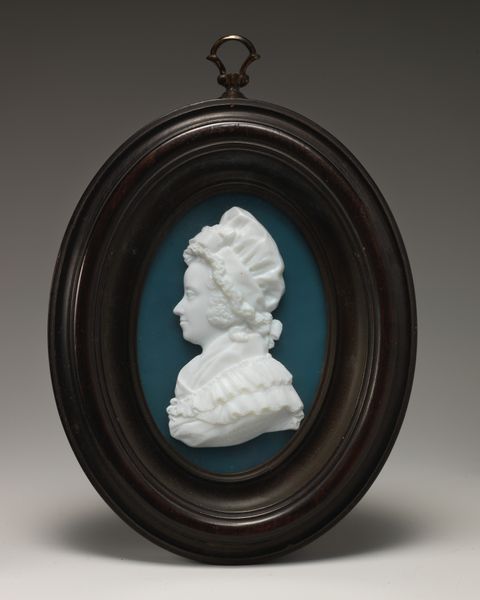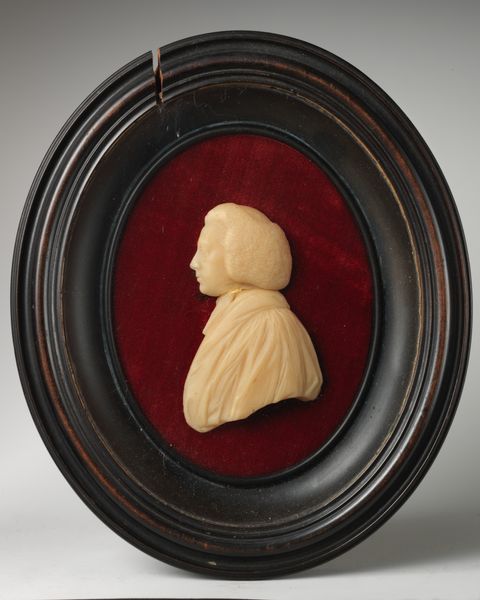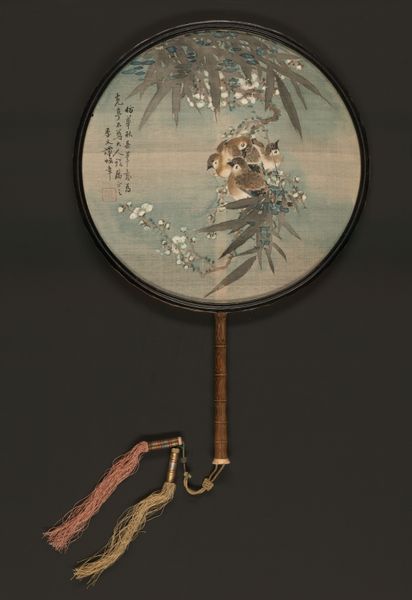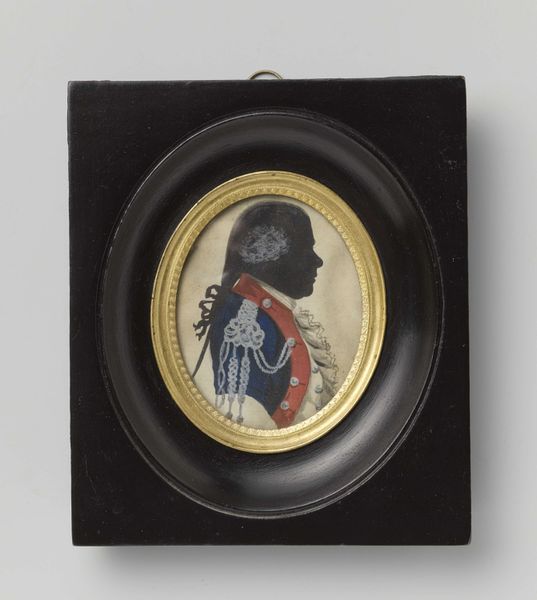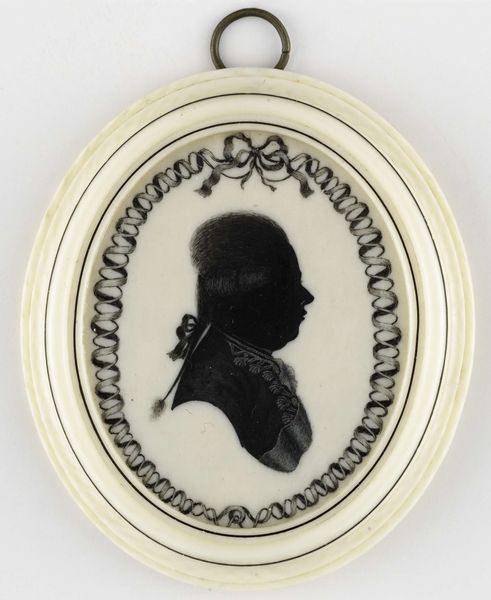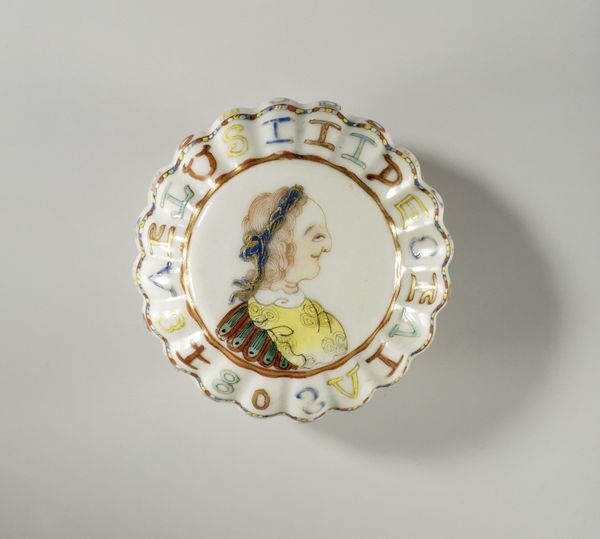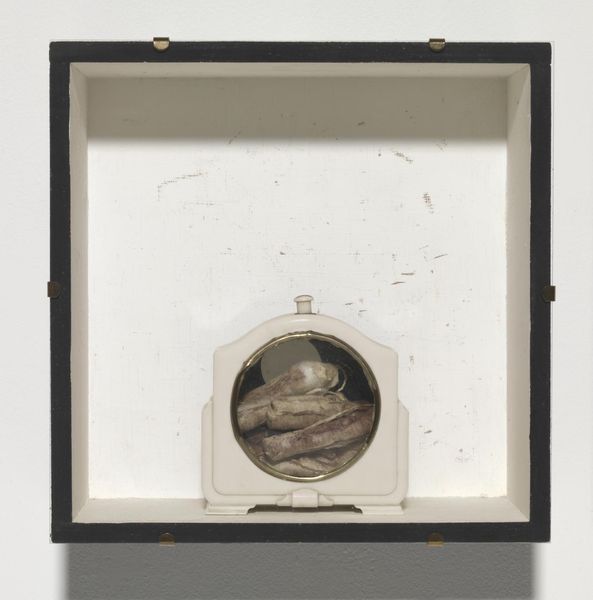
ceramic, sculpture
#
neoclassicism
#
ceramic
#
sculpture
#
ceramic
#
men
#
decorative-art
#
miniature
#
profile
Dimensions: Framed: 7 3/8 × 6 3/8 in. (18.7 × 16.2 cm)
Copyright: Public Domain
Curator: Before us is "Count Joseph Borowlaski (1739–1834)," a ceramic sculpture created in 1798 by Samuel Percy, now housed at the Metropolitan Museum of Art. It’s a fascinating example of decorative art within the Neoclassical style. Editor: What a charming little thing! Almost doll-like in its precision. He looks like he's about to whisper a secret. Is it meant to be so… compact? Curator: Indeed! It's a miniature, reflecting the 18th-century fashion for small-scale portraiture. The ceramic material would have been relatively accessible. It brings up interesting questions about access and how social status could be signaled through different materials and levels of artisanship. The piece prompts thinking about labor, the clay itself, and Percy’s choices. Editor: It's striking how that little figure pops against that pale-blue backing. And the way the dark sculpted foliage frames him adds to that feeling, doesn’t it? It's both intimate and… almost theatrical, like he's on a tiny stage. Curator: Absolutely! The Neoclassical period was heavily invested in idealised forms, even when crafting realistic likenesses. Also, the means of production here--sculpting with ceramic--complicates traditional hierarchies of "high art". Ceramic, as a medium connected to utilitarian objects, becomes a site where these definitions are actively contested and reimagined. Editor: The level of detail—the curls in his wig, the buttons on his coat! It really makes you wonder about Percy and the sitter, Count Borowlaski. It feels almost… personal. Curator: Exactly. Think about the social dynamics at play, especially given Borowlaski's fame. This ceramic becomes an interesting commodity, subject to specific rules of exchange and modes of display within elite social circles. How the artist manipulates his chosen material in response to consumer demands is particularly interesting to consider. Editor: You know, looking at it now, I keep thinking about how something so small could hold so much. It speaks volumes about society's fixation on image, power, and, ultimately, legacy. Curator: I agree; considering its production alongside these contexts illuminates a rich tapestry of materiality and meaning embedded within this striking Neoclassical artwork.
Comments
No comments
Be the first to comment and join the conversation on the ultimate creative platform.


